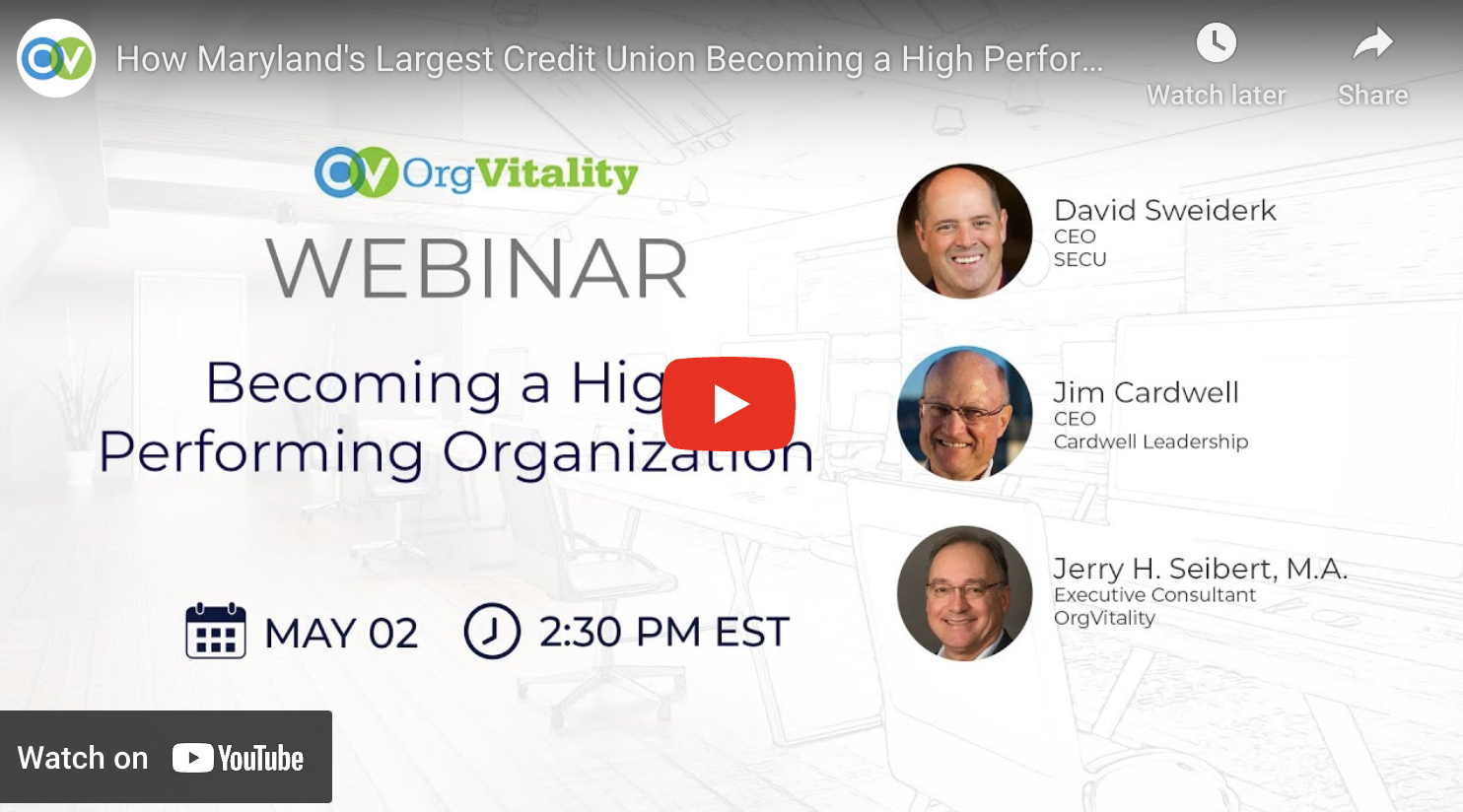
After a rapid and impressive recovery from the effects of the pandemic, the economy is now facing new challenges, particularly with inflation. As the Federal Reserve takes steps to tame inflation, they will likely initiate a recession, which the Fed says may be a necessary price for lowering inflation. If that happens, companies will make some very difficult decisions in the near future. Already there are press reports of cost-cutting at some companies, including hiring freezes and layoffs (see news from Meta, or Stanley Black & Decker, for example). If a recession occurs, the choices organizations make will have lasting consequences.
Our research shows that the choices organizations make are critical; not all consequences will be negative if the right path is chosen. That path is narrow, but for those companies that navigate it, there will be significant long-term benefits.
Let’s talk about some specific choices and their consequences. This is from research I did in past economic downturns, but the study included ~2,000 companies, so I am fairly confident it will apply again in the current environment. Much research confirms employee engagement contributes significantly to organizational performance, so it is an important outcome to track. But we have found that engagement is only one part of a bigger picture. Those organizations that also focus on developing the capabilities of individuals and teams, as well as creating a higher degree of alignment with organizational strategies and priorities, can optimize their talent and can outperform their competition during good times and bad. Those three factors in combination—alignment, capabilities and engagement (ACE)—give organizations a distinct advantage. Therefore, we looked at how various types of choices impacted how aligned employees were, whether they had the capabilities to both meet customer expectations and execute on the strategy, and on their level of engagement, about 1 year after the actions were taken. One of the things we learned was that the common responses to an economic downturn do not all have the expected effects on employees.
Tactics such as layoffs, budget cuts, and hiring freezes did uniformly have a negative impact on alignment, capabilities and engagement levels.
These actions, which include the most severe responses to a recession, can leave remaining employees feeling like they need to carry a heavier load with no additional recognition. With fewer resources, capabilities decline. The perceived inequity of these tactics weakens engagement. Cutting back can also lead to a values disconnect between employees and their company, thereby undermining alignment. And employees find it difficult to be in sync with the strategic direction of the company when those around them are losing their jobs. All in all, it’s a bad situation for both the organization and its employees.
In an interesting contrast, the effects of compensation-oriented tactics were very different. Pay cuts, pay freezes, and benefit reductions do have a negative impact on employee engagement, as you’d expect.
But compensation cuts in our research had no significant impact on alignment or capabilities. It is possible these actions, while not welcomed, are more likely to be viewed as rational and acceptable—sharing the pain through lower profits for the company and lower rewards for staff. Thus, alignment may be maintained, and with resources preserved in the organization, capabilities remain largely intact.
Furloughs also cut pay, but by reducing total work hours; unlike layoffs, workers remain employees. As with the other techniques, use of furloughs had no impact on alignment and capabilities. But they also had no impact on engagement. Perhaps that is because, unlike the other actions, a furlough may be viewed as somewhat more equitable—you don’t get paid, but you’re also not required to work during the furlough. Plus, you have the hope and expectation of returning to your job.
| Actions and Their Consequences | Impact on Employees 1 Year Later | ||
| Alignment | Capabilities | Engagement | |
| Responding with layoffs, mandatory budget cuts, or hiring freezes | Moderate negative impact | ||
| Focusing on compensation: reduced pay, frozen pay, or reduced benefits | No impact | Moderate negative impact | |
| Furloughs | No impact | ||
| Cutting back on services to customers, or reduced services internally, between depts. | Strong negative impact | ||
| Identified process changes to reduce costs | Strong positive impact | ||
There are more subtle options than slash and burn, however, such as reducing service levels internally or to customers. Our research showed that – perhaps unexpectedly – these tactics actually have a greater negative effect on ACE.
Reducing services to customers has a strong negative impact on alignment and engagement; employees see a serious disconnect between oft-repeated strategies and mission statements that emphasize customer service, and actions that may damage customer relationships, if not harm the customers themselves. It is no shock that aspects of engagement such as advocacy (meaning willingness to recommend the company) and discretionary effort might also decline in such a context. The effect was even stronger when the choices reduced the ability of departments meet each others’ needs – to service “internal” customers. Logically, changes that imperil a department’s ability to service other internal groups would lead to lower perceptions of capabilities. After all, points of failure within the organization can reasonably be expected to ultimately lead to failures with customers. Employees may also feel less certain they are on the same strategic page as senior leadership, thus lessening alignment.
The strong impact on engagement is a little more curious. It may be a reaction to being placed in a situation where you’re prevented from doing the best work possible, resulting in a certain degree of cognitive dissonance. Or perhaps it flows from frustration with a lack of support from other parts of the organization.
Each of these choices can be considered reductive, if not actually destructive, in their fundamental nature.
Leaders may choose to think of them as pruning now for future growth, but that does not change the fact that the pruning has serious repercussions for employees and the customers they serve.
One choice has a very different impact: a decision to focus on identifying process changes as a means to reduce costs.
This approach maintains consistency with pre-downturn goals, so looking within the organization to collaboratively make improvements and reduce costs actually increases alignment. And effective process improvement drives increased capabilities.
For employees, it represents the company opting for surgery over amputation. Not surprisingly, this choice actually leads to higher levels of engagement. Employees are highly attuned to organizational behavior that values people and recognizes their ability to help a company prevail in challenging times. And success in these efforts is inherently rewarding, leading to a sense of accomplishment and feelings that one’s contributions are important and meaningful. That is a strategy that can actually build confidence in the company. It is possible to come out of a recession with a stronger culture and a more committed workforce, while you competitors are faced with years of rebuilding trust and engagement.
There is a lesson here for every organization that may soon be facing a difficult future. If you believe employees are your most valuable assets, then act as if they really are just that.
Tap into the wealth of knowledge they have to drive cost out of your systems. When more rapid, dramatic action is need, look to furloughs before taking other steps. In the long run these strategies will serve your organization better than almost any other response to a recession.
Author

Jerry Seibert, M.A., is an executive consultant at OrgVitality. He has 30 years of experience working with organizations to measure and improve customer, employee and other stakeholder perceptions. In addition to leading a wide range of client engagements, Mr. Seibert has also led research in internal customer service and its connection to business outcomes. He has designed and implemented employee surveys for numerous organizations, ranging in scope from global entities to small privately held firms. He is the co-author of Hidden Drivers of Success: Leveraging Employee Insights for Strategic Advantage, published by SHRM in 2013, and has more than 20 publications to his credit in a variety of peer reviewed and professional journals. Mr. Seibert received his M.A. degree in Industrial/ Organizational Psychology from Western Kentucky University in Bowling Green. He has a B.A. in Psychology from the University of Delaware.






